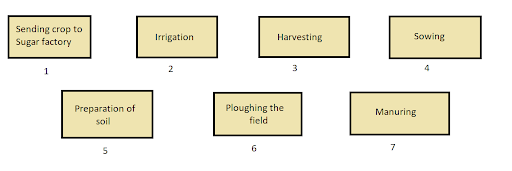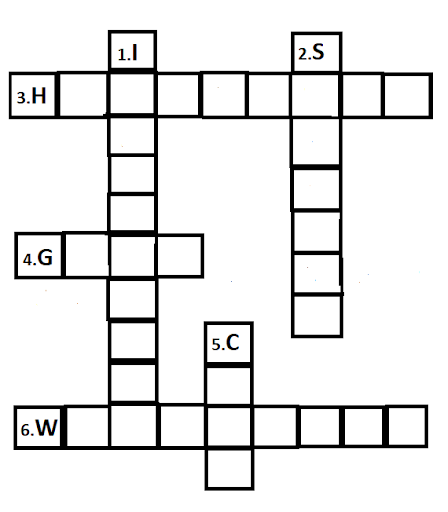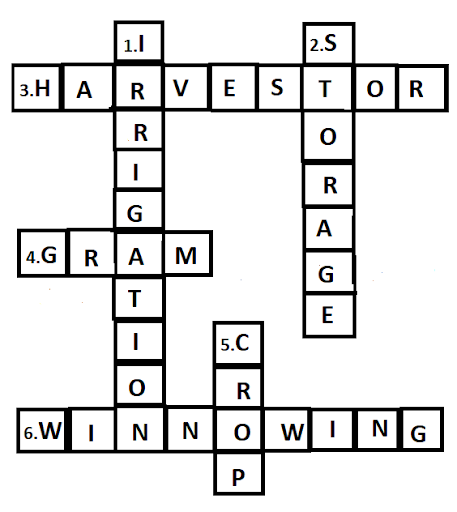NCERT Class 8 Science Chapter 1 Crop Production and Management FREE PDF Download
FAQs on NCERT Solutions for Class 8 Science Chapter 1 Crop Production and Management
1. What topics are covered in NCERT Solutions for Class 8 Science Chapter 1 - Crop Production and Management?
The NCERT Solutions for Class 8 Science Chapter 1 - Crop Production and Management cover various topics such as types of crops, agricultural practices, crop production cycle, sowing methods, soil preparation, irrigation, fertilisers, pests and diseases, and harvesting techniques.
2. How can NCERT Solutions for Class 8 Science Chapter 1 - Crop Production and Management help me understand the concepts better?
The NCERT Solutions provide detailed explanations, diagrams, and examples that break down the concepts of crop production and management into easily understandable parts. By following the solutions, you can gain a clear understanding of the processes involved in crop production, from soil preparation to harvesting, and comprehend the importance of various agricultural practices.
3. Are the NCERT Solutions for Class 8 Science Chapter 1 - Crop Production and Management easy to follow?
Yes, the NCERT Solutions provided by Vedantu are designed to be student-friendly and easy to follow. The solutions use simple language and step-by-step explanations to ensure that students can grasp the concepts easily. Additionally, the solutions include diagrams and examples to further enhance comprehension.
4. Can the NCERT Solutions for Class 8 Science Chapter 1 - Crop Production and Management help me with exam preparation?
Absolutely! The NCERT Solutions cover all the important topics and questions from the chapter, which are likely to be asked in exams. By going through the solutions, practising the provided questions, and understanding the concepts thoroughly, you can strengthen your exam preparation and perform well in your science examinations.
5. Are the NCERT Solutions for Class 8 Science Chapter 1 - Crop Production and Management available online?
Yes, Vedantu provides the NCERT Solutions for Class 8 Science Chapter 1 - Crop Production and Management online. You can access these solutions on Vedantu's website or through their mobile app. They are readily available for free, allowing you to study and revise the chapter conveniently at any time and from anywhere with an internet connection.
6. What is crop production and management class 8?
Crop production and management in Class 8 is a subject that teaches students about the entire process of growing crops, from planting seeds to harvesting and storing the final product. It covers various aspects, including:
Soil preparation: Making the soil loose and fertile for healthy plant growth.
Sowing: Planting seeds at the right depth and spacing.
Manure and fertilizers: Adding nutrients to the soil for better crop yield.
Irrigation: Providing water to the crops regularly.
Weed control: Removing unwanted plants that compete with crops for resources.
Protection from pests and diseases: Safeguarding crops from harmful insects and illnesses.
Harvesting: Gathering the mature crops.
Storage: Preserve the harvested crops for later use.
By understanding these practices, students gain valuable knowledge about the importance of agriculture and the efforts involved in ensuring a sustainable food supply.
7. What is crop class 8 very short answer?
Crop refers to plants grown for their edible parts, such as grains, fruits, vegetables, and pulses. Studying crops helps students understand their role in agriculture and appreciate the diverse range of plants that provide us with food.
8. What are the important topics in class 8 science chapter 1?
Some of the important topics in Class 8 Science Chapter 1- Crop Production and Management are:
Basic Practices of Crop Production
Agricultural Implements
Irrigation
Storage
Food from Animals
Class 8 Science Chapter 1 Question Answer will help students understand the concepts of the following topics and enhance their learning.
9. What are the two broad cropping patterns followed in India?
The two broad cropping patterns followed in India are:
Rabi Crops: These crops are grown during the winter season, which is from October to March.
Kharif Crops: These crops are sown during the rainy season, which is from July to October.
NCERT Class 8 Science Chapter 1 Solutions provides more insights on the topics and helps students to excel in the examinations.





















